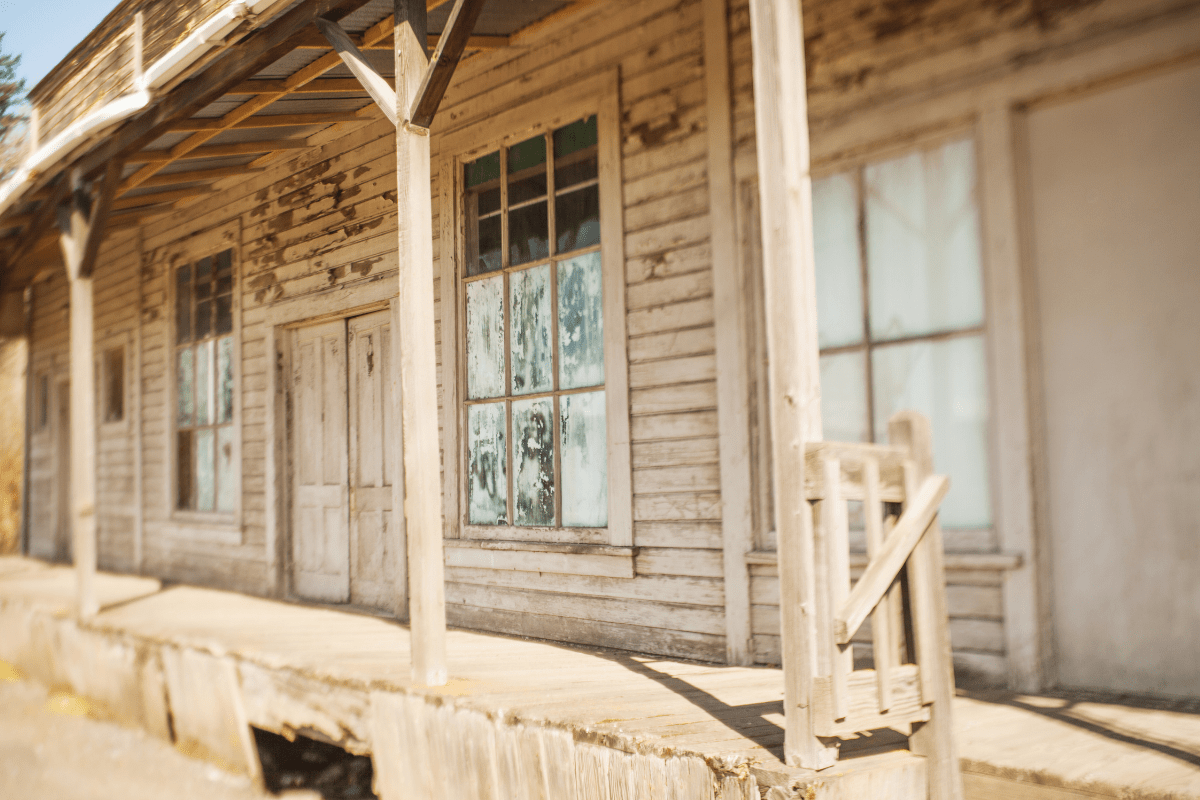Los Alamos might be the answer to your prayers if you're looking for a place where your kids are more likely to become rocket scientists than TikTok influencers. With crime rates so low they make Mayberry look sketchy and household incomes that'll make your Silicon Valley friends jealous, New Mexico's family-friendly cities are full of surprises. Let's dig into the data and find out which Land of Enchantment communities actually live up to that nickname… at least when it comes to raising kids.
The shocking truth about safety in New Mexico
Here's the thing nobody tells you about New Mexico: yes, the state has the highest violent crime rate in America at 780 per 100,000 residents. But before you start shopping for bulletproof backpacks, consider this: several New Mexico communities are actually safer than your average American suburb.
Los Alamos takes the crown with just 6 crimes per 1,000 residents, making it 64% safer than the typical U.S. city. Not to be outdone, tiny Corrales logs only 5 crimes per 1,000 residents with zero murders, rapes, or robberies in recent reporting periods. That's right, zero. Your biggest threat in Corrales might be aggressive tumbleweeds.
Rio Rancho offers suburban safety with 19 crimes per 1,000 residents, while Farmington surprises with violent crime rates 45% below national average. Even crime-challenged cities have their bright spots: Albuquerque's overall crime rate sits 165.7% above the national average, but neighborhoods like Valley Gardens and Desert Spring Flower report crime rates 94-97% lower than the city average.
The neighborhood factor that changes everything
If you're considering Albuquerque, Santa Fe, or Las Cruces, choosing the right neighborhood isn't just important… it's everything. In Albuquerque, the difference between living in North Albuquerque Acres versus the International District is like comparing Beverly Hills to a scene from Breaking Bad (which, yes, was filmed here).
Santa Fe's 59 crimes per 1,000 residents jumped 5% in 2024, while Las Cruces struggles with 61 per 1,000. But even these cities have pockets of tranquility if you know where to look.
Schools: where New Mexico gets interesting
New Mexico ranks 50th in education nationally, which sounds about as appealing as green chile on ice cream. But plot twist: several districts perform like they're in a completely different state.
Los Alamos Public Schools sits pretty at 4th of 144 districts statewide. Their students achieve math proficiency rates of 54-68% versus 25% statewide, and reading proficiency of 67-75% compared to 34% statewide. Los Alamos High School maintains a 94% graduation rate with 56% of students taking AP courses. Those aren't typos… those are real numbers.
Rio Rancho Public Schools ranks 30th statewide but first in the Albuquerque metro area. With 37% math proficiency and 45-46% reading proficiency, they're crushing state averages. The Ask Academy, a local charter school, ranks as the 3rd best high school in New Mexico.
The Albuquerque advantage (yes, really)
Albuquerque Public Schools operates 171 schools including 31 charter and 12 magnet options. The crown jewel? Albuquerque Institute of Math & Science ranks #1 in New Mexico and #20 nationally with 100% AP participation. La Cueva High School boasts a 94% graduation rate.
Even tiny Corrales, which feeds into APS, has Corrales Elementary ranking in the top 10% statewide with 50-54% proficiency in both math and reading. Not bad for a village where horses have right of way on main roads.
When schools struggle
Let's be real: not every district is winning awards. Santa Fe Public Schools has over half its schools rated D or F by the state, though bright spots like Mandela International Magnet School (#2 statewide) exist. Las Cruces Public Schools ranks 81st of 144 with just 22% math proficiency and 68% of students economically disadvantaged.
Farmington Municipal Schools sits at 74th statewide with 25% math proficiency… which actually matches the state average. When matching the state average counts as an achievement, you know the bar is underground.
The money talk: what you'll actually pay
Housing costs in New Mexico vary more wildly than your teenager's mood swings. At the luxury end, Corrales demands median home prices between $668,262 and $766,566 for homes often sitting on acre-plus lots. Santa Fe follows at $570,886 median, while Los Alamos asks $510,676 median with homes selling in just 8 days.
The middle ground looks more reasonable. Rio Rancho's median hovers between $323,435 and $394,597 depending on who's counting, while Albuquerque sits at $342,911 median. But if you're watching every penny, Las Cruces offers $282,928 median prices and Farmington wins the affordability race at $263,033 median… that's 42.2% below the national average.
Renters aren't forgotten either. Three-bedroom rentals run:
- Rio Rancho: $1,625-$2,100
- Albuquerque: $2,250-$2,300
- Las Cruces: $1,650
- Farmington: $1,200-$1,400
Cost of living beyond housing
Farmington takes the affordability crown with a cost of living index of 79.5. Las Cruces follows at 90, Albuquerque at 92, and Los Alamos surprises at 97.7 despite its pricey homes. Only Santa Fe exceeds the national average at 112, because apparently, adobe and turquoise have a premium.
Where the jobs are (and what they pay)
Los Alamos residents enjoy a median household income of $136,502, nearly double the state average. Thank Los Alamos National Laboratory and its 13,200 employees for that. Corrales follows with $114,207 median household income and an entrepreneurship rate of 25.63%… apparently, working from home in your pajamas pays well.
Rio Rancho's economy revolves around Intel's 3,000+ employees, with a recent $3.5 billion expansion adding 700 jobs. The median household income reaches $83,310, and those Intel engineers aren't complaining.
Albuquerque offers the most diverse employment landscape. Sandia National Laboratories employs 12,000+ people, while the University of New Mexico, Presbyterian Healthcare Services, and emerging tech companies like Maxeon Solar (bringing 1,800 jobs) round out the options.
The employment reality check
Santa Fe shows 3.2% unemployment as of October 2024, with state government and tourism driving the economy. Las Cruces workers average $25.38 hourly, below national averages but offset by that 90 cost of living index. Farmington's 5% unemployment rate comes with above-average wages in energy sectors, though dependence on fossil fuels creates uncertainty.
Healthcare: because kids get sick
Parents in Albuquerque hit the jackpot with UNM Children's Hospital, the state's only dedicated pediatric hospital featuring 40+ specialties. Los Alamos families rely on the Children's Clinic, serving the community for 60+ years with board-certified pediatricians.
Rio Rancho offers Presbyterian Medical Group pediatric services, while Las Cruces impresses with Memorial Medical Center's 21-bed pediatric unit and the region's only Pediatric Intensive Care Unit. Even Farmington provides AFC Urgent Care with pediatric services.
The fun stuff: what to do when you're not working or studying
Los Alamos packs serious outdoor punch with 200+ miles of trails and Pajarito Mountain Ski Area just 5.3 miles from downtown. The Bradbury Science Museum offers free admission, perfect for rainy days or when you need to convince your kids that science is cool.
Albuquerque goes big with 300 parks covering 29,000+ acres, plus family magnets like:
- Explora Science Center (250+ interactive exhibits)
- ABQ BioPark (zoo, aquarium, botanic garden)
- Balloon Fiesta Park (because where else can kids see 500+ hot air balloons?)
Santa Fe counters with 50+ scenic parks and cultural overload. The New Mexico FamilyPass grants free admission to 20+ museums, while Meow Wolf's House of Eternal Return provides Instagram-worthy weirdness. Ski Santa Fe sits 16 miles from the Plaza, and the city rarely exceeds 90°F with 300+ sunny days annually.
Making the choice: which city fits your family?
If safety and education trump everything else, Los Alamos is your answer despite the premium price tag. No other New Mexico city matches its combination of minimal crime, exceptional schools, and scientists' salaries.
Seeking that suburban dream with good jobs? Rio Rancho delivers new development, Intel-anchored employment, and significantly better safety than larger metros. Just prepare for that Albuquerque commute if you work elsewhere.
Want small-town charm with big-city access? Corrales offers rural character, top-tier safety, and excellent elementary education. The catch: 90% of residents own their homes, and breaking into this market requires deep pockets or exceptional timing.
For the budget-conscious
Las Cruces provides university town vibes and New Mexico's most affordable major-city housing. The trade-offs include higher crime rates and struggling schools, but proximity to NMSU creates a youthful energy and decent healthcare options.
Farmington wins the pure affordability contest with the state's lowest cost of living. You'll get better safety than the big cities and adequate schools, but geographic isolation and economic uncertainty around fossil fuel dependence create long-term questions.
The Albuquerque calculation
Choosing Albuquerque requires homework… lots of it. Pick the right neighborhood (North Albuquerque Acres, Tanoan, Sandia Heights) and you'll enjoy excellent schools, reasonable safety, and unmatched job diversity. Pick wrong and, well, you've seen Breaking Bad.
The Santa Fe wildcard
Santa Fe suits families who value culture, mild weather, and unique experiences over perfect statistics. Yes, schools struggle and costs run high, but where else can your kids grow up surrounded by world-class art, perfect skiing weather, and green chile on everything?
The bottom line
New Mexico's family-friendly cities prove that state averages tell only part of the story. From Los Alamos's rocket scientist paradise to Farmington's working-class affordability, each community offers something different. The key is matching your family's priorities… whether that's top-tier schools, minimal crime, job opportunities, or just really good green chile… to the right community.
Research specific neighborhoods, visit during different seasons, and talk to local families. Because in the Land of Enchantment, finding the right city for your family might just be the most enchanting thing of all. Even if the state rankings suggest otherwise.





